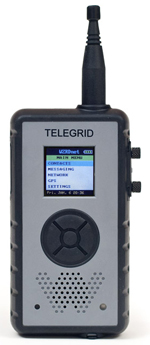
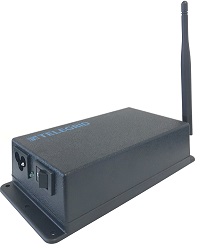 The WZRDnet Repeater (P/N WRN-320) provides extended coverage for the WZRDnet Network. The device can be easily mounted on a wall or mast for added network assurance. It is a small, lightweight device making it an ideal solution for both permanent and temporary needs. The Repeater can be wirelessly programmed via the WZRDnet Command Center or connected to a PC via its mini-USB port. It is powered by either AC, DC or solar power and includes an internal Lithium-Ion battery for portable applications including anti-piracy operations and disaster relief. Data Sheet
The WZRDnet Repeater (P/N WRN-320) provides extended coverage for the WZRDnet Network. The device can be easily mounted on a wall or mast for added network assurance. It is a small, lightweight device making it an ideal solution for both permanent and temporary needs. The Repeater can be wirelessly programmed via the WZRDnet Command Center or connected to a PC via its mini-USB port. It is powered by either AC, DC or solar power and includes an internal Lithium-Ion battery for portable applications including anti-piracy operations and disaster relief. Data Sheet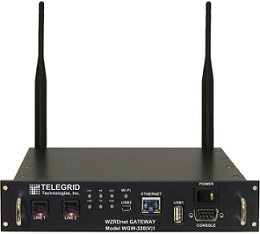 The WZRDnet Gateway provides connectivity between the WZRDnet mesh network and any available IP network (e.g., Wi-Fi, VOIP, etc.), or analog network (i.e., PSTN). The WZRDnet Gateway can interconnect with various WAN access systems like Very Small Aperture Terminals (VSATs), Broadband Global Area Network (BGAN) terminals, Rapid Response Tactical Routers (RRTRs), etc. It thus increases the availability of these access systems to network users that are not able to physically connect to or be indirect line-of-sight of these access systems. The Gateway is capable of interoperating with Wide Area Networks via Ethernet, analog PSTN, Wi-FI, USB, and serial connections. Data Sheet
The WZRDnet Gateway provides connectivity between the WZRDnet mesh network and any available IP network (e.g., Wi-Fi, VOIP, etc.), or analog network (i.e., PSTN). The WZRDnet Gateway can interconnect with various WAN access systems like Very Small Aperture Terminals (VSATs), Broadband Global Area Network (BGAN) terminals, Rapid Response Tactical Routers (RRTRs), etc. It thus increases the availability of these access systems to network users that are not able to physically connect to or be indirect line-of-sight of these access systems. The Gateway is capable of interoperating with Wide Area Networks via Ethernet, analog PSTN, Wi-FI, USB, and serial connections. Data Sheet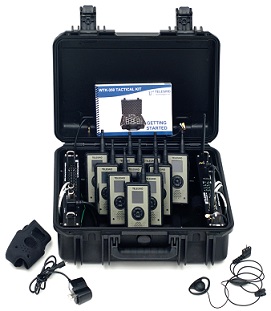 WZRDnet Kits contain, in a single man-transportable case, all the equipment needed to form a complete stand-alone voice, text and data mesh network as well as provide Wide Area Network access. WZRDnet Transportable Kits provide modular and mobile communications around obstructions and beyond line-of-sight. Increase capabilities by integrating satellite terminals, ruggedized laptops, and solar power sources. Data Sheet.
WZRDnet Kits contain, in a single man-transportable case, all the equipment needed to form a complete stand-alone voice, text and data mesh network as well as provide Wide Area Network access. WZRDnet Transportable Kits provide modular and mobile communications around obstructions and beyond line-of-sight. Increase capabilities by integrating satellite terminals, ruggedized laptops, and solar power sources. Data Sheet.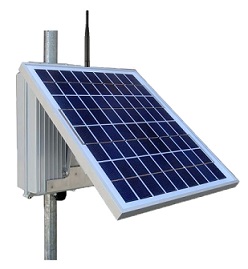 The WZRDnet Outdoors Repeater (P/N WRN-325) consists of a standard Repeater (P/N WRN-320) and a 10 Watt solar panel. It provides extended range coverage in an outdoors environment. The device is provided with its own free-standing mast and can be placed on any flat surface. The Repeater can be wirelessly programmed via the WZRDnet Command Center or connected to a PC via its mini-USB port. The solar panel charges up the internal Lithium-Ion battery in the repeater which provides at least 72 hours of continuous operation.
The WZRDnet Outdoors Repeater (P/N WRN-325) consists of a standard Repeater (P/N WRN-320) and a 10 Watt solar panel. It provides extended range coverage in an outdoors environment. The device is provided with its own free-standing mast and can be placed on any flat surface. The Repeater can be wirelessly programmed via the WZRDnet Command Center or connected to a PC via its mini-USB port. The solar panel charges up the internal Lithium-Ion battery in the repeater which provides at least 72 hours of continuous operation.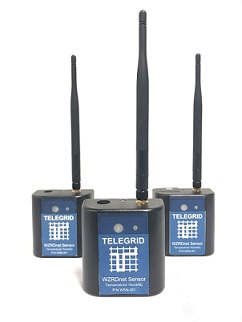 WZRDnet includes a family of Networked Sensors (P/N WUS-36x) which can operate as part of the network. The family of sensors includes a Temperature/ Humidity Sensor (P/N WUS 361), a Liquid Sensor (P/N WUS362) and a noise sensor (P/N WUS 363). Sensors operate with an external 5 VDC power supply (e.g., a battery or a “wall-wart”) and can be placed in any position where they sense and report to any remote Command center.
WZRDnet includes a family of Networked Sensors (P/N WUS-36x) which can operate as part of the network. The family of sensors includes a Temperature/ Humidity Sensor (P/N WUS 361), a Liquid Sensor (P/N WUS362) and a noise sensor (P/N WUS 363). Sensors operate with an external 5 VDC power supply (e.g., a battery or a “wall-wart”) and can be placed in any position where they sense and report to any remote Command center.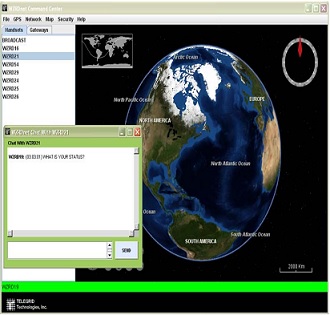 The WZRDnet Command Center is a user friendly, Java based application that allows communications between a central operator and all handsets. The Command Center software provides a list of all available users and allows bi-directional communication with each. The Command Center supports force tracking of all WZRDnet devices in the network. PLI can be sent periodically by all handsets or can be requested on demand by the operator for any or all handsets. Received PLI is plotted on a 3D map that is powered by Google Earth. The 3D map provides a graphical presentation of the entire network and allows the operator to control the map’s view (e.g., zoom, pan, etc.). Historical PLI is stored in order to track a user’s movement and provide the route traveled to their current location. The Command Center can be used to track personnel as well as equipment (e.g., vehicles, cargo, etc.). Data Sheet
The WZRDnet Command Center is a user friendly, Java based application that allows communications between a central operator and all handsets. The Command Center software provides a list of all available users and allows bi-directional communication with each. The Command Center supports force tracking of all WZRDnet devices in the network. PLI can be sent periodically by all handsets or can be requested on demand by the operator for any or all handsets. Received PLI is plotted on a 3D map that is powered by Google Earth. The 3D map provides a graphical presentation of the entire network and allows the operator to control the map’s view (e.g., zoom, pan, etc.). Historical PLI is stored in order to track a user’s movement and provide the route traveled to their current location. The Command Center can be used to track personnel as well as equipment (e.g., vehicles, cargo, etc.). Data Sheet